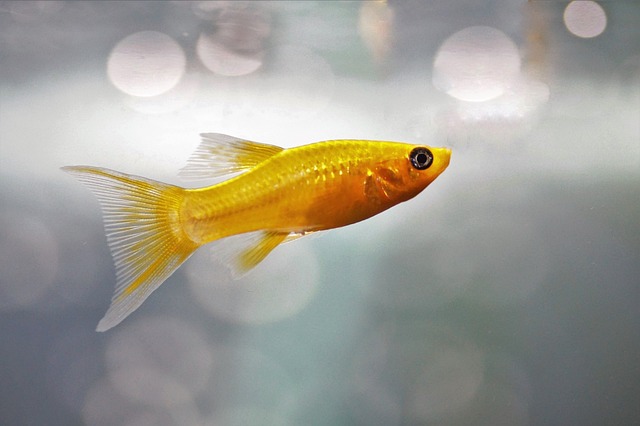Mollies, scientifically known as Poecilia spp., are a popular choice among aquarium enthusiasts. These versatile freshwater fish come in a wide range of colors and exhibit fascinating behaviors, making them a delightful addition to any aquarium. In this article, we will explore the world of mollies, discussing their characteristics, care requirements, and the reasons why they are favored by fishkeepers around the world.
Overview of Mollies:
Mollies are small, tropical fish native to various regions of the Americas. They belong to the Poeciliidae family, which also includes other popular fish species such as guppies and swordtails. Mollies are known for their vibrant colors, ranging from black, silver, and gold to hues of orange, yellow, and even dalmatian-like spots. They also come in different fin shapes, including sailfin and lyretail varieties.
Molly Species:
There are several species and hybrids of mollies available in the aquarium trade. Some of the most common ones include:
Sailfin Molly (Poecilia latipinna): This species is characterized by its impressive sail-like dorsal fin, which adds a majestic appearance to the fish. Sailfin mollies are often larger in size compared to other Molly species.
Balloon Molly (Poecilia latipinna): Balloon mollies have a unique body shape with a rounded abdomen, which gives them a distinct appearance. They are available in various colors and patterns.
Dalmatian Molly (Poecilia latipinna): Dalmatian mollies are recognized for their speckled or spotted patterns resembling those of Dalmatian dogs. These striking patterns make them visually appealing and highly sought after.
Black Molly (Poecilia sphenops): Black mollies have a dark, solid black coloration that can sometimes exhibit a metallic sheen. They are elegant and add a touch of sophistication to any aquarium.
Care Requirements:
Mollies are generally hardy fish, making them suitable for both beginner and experienced aquarists. However, it’s essential to provide them with proper care to ensure their well-being:
Aquarium Size: Mollies are active swimmers and require ample swimming space. A tank size of at least 20 gallons is recommended for a small group of mollies.
Water Parameters: Mollies prefer slightly alkaline water conditions with a pH range between 7.5 and 8.5. They also require a temperature range of 75-82°F (24-28°C) to thrive.
Tank Setup: Providing a well-planted aquarium with plenty of hiding spots and open swimming areas is ideal for mollies. They appreciate the presence of live plants, which not only enhance the aesthetics but also provide them with places to explore and seek shelter.
Water Quality: Mollies are sensitive to poor water conditions. Regular water changes and filtration are crucial to maintain excellent water quality and prevent the accumulation of harmful substances.
Diet: Mollies are omnivorous and require a varied diet. They should be fed a combination of high-quality flake or pellet food supplemented with occasional live or frozen foods like brine shrimp, bloodworms, and daphnia.
Breeding Mollies:
Mollies are livebearers, meaning that they give birth to live fry rather than laying eggs. Breeding mollies are relatively easy, making them popular among aquarists interested in observing the fascinating process of reproduction:
Breeding Tank: Setting up a separate breeding tank is recommended to protect the fry from being eaten by adult fish. The tank should be well-planted, providing hiding spots for the fry to escape predation.
Separating the Females: To ensure successful breeding, it’s advisable to separate the male and female mollies for a few weeks before introducing them to the breeding tank. This allows the females to store sperm and increases the chances of a successful pregnancy.
Gestation and Birth: Female mollies can store sperm for several months, giving birth to multiple batches of fry. The gestation period ranges from 4-6 weeks, depending on various factors. Once the female is ready to give birth, she will release live fry into the tank.
Rearing the Fry: The fry is typically capable of swimming and feeding on their own shortly after birth. Providing them with adequate hiding spots and a diet of crushed flake food or specialized fry food will promote their growth and survival.
Compatibility:
Mollies are generally peaceful fish but can exhibit fin-nipping behavior, especially towards fish with long, flowing fins. When selecting tankmates for mollies, it’s important to consider species that are compatible in terms of size and temperament. Suitable tankmates for mollies include other peaceful community fish like tetras, platies, and peaceful barbs.
Fascinating Behaviors:
Mollies are known for their active and social nature, displaying various intriguing behaviors in the aquarium:
Surface Skimming: Mollies have a unique habit of skimming the water’s surface, which adds liveliness to the aquarium. They may do this to catch insects or simply out of curiosity.
Displaying Fin Variations: Sailfin mollies, in particular, are known for their impressive dorsal fins, which the males often use to display dominance or court females.
Social Interactions: Mollies are social fish that enjoy swimming and interacting with their tank mates. They often form hierarchies within their groups, displaying interesting social behaviors.

